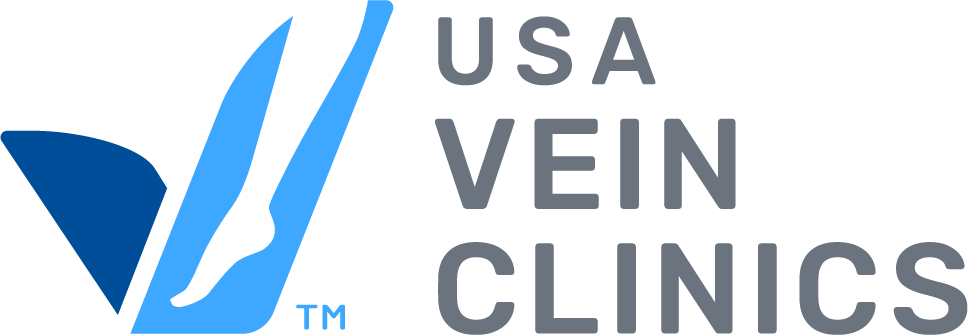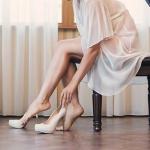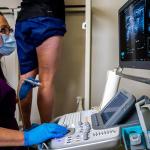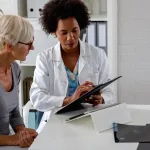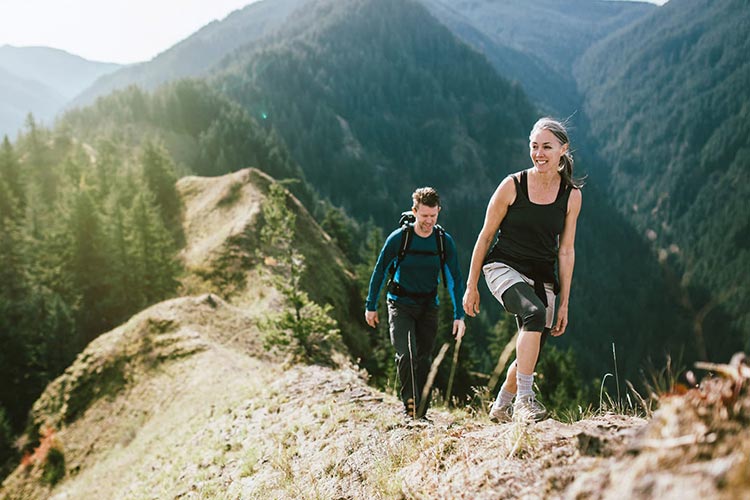
Wondering if your varicose veins are a sign of poor health? Learn about the common conditions associated with this topic and how you can treat them.
I was talking to my neighbor this past week, and he noticed he had a few varicose veins down the back of his right calf. While he wasn’t terribly concerned about the veins themselves, he was concerned that it may indicate some variation of poor health or poor circulation. So, let’s take a moment to look at what varicose veins are, their causes, and if they are a sign of poor health.
What are varicose veins?
Let’s start with what a varicose vein is. Most of us know them as lumpy, ropy protrusions under the surface of our skin, but did you know that spider veins are varicose veins as well? So, what exactly is a varicose vein? In a healthy circulatory system, arteries carry oxygen-rich blood to all the tissue of the body, while their counterpart, the veins, carries deoxygenated blood back to the lungs to get re-oxygenated. They do this against gravity using a series of one-way valves and the contraction of your calf muscles while walking. When the valves fail, blood flow is no longer able to get out of the leg effectively and begins to pool in your legs, often by your ankles. Over time, this pooling and backflow stretches out the vein wall and creates the bulging, twisted veins we have come to associate with varicose veins.
How do varicose veins affect my health?
What does this say about your health you ask? Great question!
The major risk factors for varicose veins include:
- Family history: Thank your mom, dad, grandpa or grandma… If another family member has had varicose veins, you are much more likely to develop them too.
- XX chromosomes: Due to hormonal changes throughout life, pregnancy, and menopause, women are at a much higher risk than men to develop varicose veins. In fact, 1 in 3 women in the USA has varicose veins.
- Pregnancy: Due to the increase in blood volume during pregnancy and the large fluctuations in progesterone levels, women are at a higher risk of having varicose veins with each subsequent pregnancy.
- Injury: Car accidents, sports injuries, and even surgeries can cause damage to veins and eventually lead to varicose veins.
- Standing or sitting for an extended period of time: Remember when we discussed how the veins fight gravity to push the blood flow up and out of the legs? It does this with a combination of one-way valves and muscle contractions when we walk and move to squeeze the veins and push the venous flow up and out of the legs. It is so important; the calf muscle pump is actually called the heart of the legs. Needless to say, if we consistently sit or stand without moving for extended periods of time, the venous flow is unable to get out of the leg properly and can cause damage to the vein wall. Over time this damage can cause varicose veins to develop.
- Age: Varicose vein disease is a progressive disease, unlike a fine wine, it does not get better with age.
- Obesity: If you are overweight, it adds additional pressure on your veins, which can over time, increase your risk of varicose veins.
The difference between the physical signs and symptoms of varicose veins
Going back to my neighbor – he was worried about his right leg because of the obvious bulging vessels on his calf, also known as signs of varicose vein disease. But he was also worried about his left leg as well. Although he couldn’t physically see any signs of varicose vein disease on his left leg, he was experiencing similar symptoms of vein disease, including heaviness and cramping, despite not having any visible varicose veins. In the beginning stages of varicose vein diseases, you may experience symptoms, without physical signs, such as visible skin changes and protruding veins.
Common physical signs and symptoms associated with varicose vein disease include:
-
- Heaviness
- Tiredness
- Aching/pain
- Burning/throbbing/itching
- Muscle cramping and restlessness, particularly once in bed for the night
- Swelling, particularly near the ankles
- Skin discoloration below the knee, particularly closer to the ankle
- Healed or open ulcers (wounds) on the inside of the leg close to the ankle.
So, are varicose veins a sign of poor health?
Varicose veins aren’t necessarily an indication that you have poor health, it could simply be that you have varicose vein disease. However, lifestyle changes can prove to be helpful in managing symptoms of varicose vein disease and improving overall health.
For example, if you suffer from obesity, some lifestyle changes might include eating a healthy diet and walking 20 min, 2-3 times a day, which will help you lose weight and help slow the progression of varicose vein disease. The weight loss will also help decrease the pressure on your veins which may lead to slight improvements in the symptoms you feel.
If your job requires you to sit or stand for extended periods of time, set a timer as a reminder to walk around or even march in place for 5-10 min every few hours.
Let the vein specialists help
If you are concerned about your varicose veins, talk to your primary care physician. While varicose veins on their own may not be an indication of poor health, they can put you at an increased risk for a blood clot or other venous related complications such as irreversible skin changes and venous ulcers.
The good news is, if you are experiencing any of the signs and/or symptoms of varicose veins, or can visually see them, you are not alone. 1 in 10 men and 1 in 3 women in the United States suffer from varicose veins. Because of its prevalence, there are minimally invasive vein treatments available to treat your varicose veins and they are covered by most major insurance companies.
The downside of varicose veins is that they typically get worse over time. If you are concerned about your health or circulation due to your varicose veins or are experiencing any of the signs and symptoms we discussed above, reach out to a vein specialist in your city today. See how USA Vein Clinic can get you back on your feet in no time.
